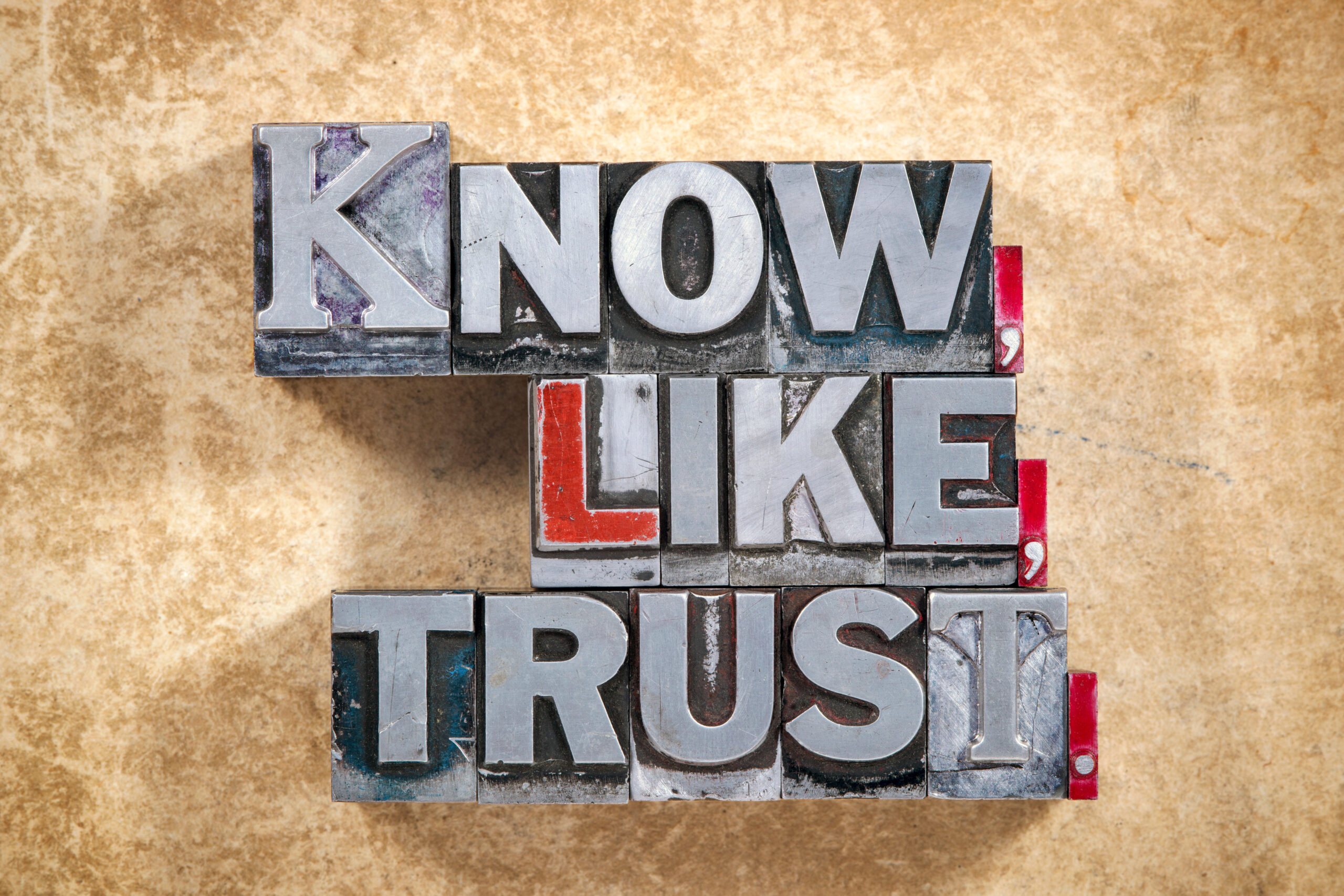 Something happened that has not happened in over 10 years. My wife came upstairs and she had this look on her face like she's about to cry. She said, “I broke my phone.” Okay, literally it fell out of her pocket and it hit the corner and it cracked the screen. Now, I've never done it. She hasn't done it in 10 years. I'm sure a lot of you have dropped and broken your phone. We've had to go to have the screen replaced, because what're you going to do? I calmed her down. I said, it's okay, I'll just get the screen replaced.” I logged onto Facebook. I said, “Hey peeps, anybody in the area use a particular place?” I got a bunch of recommendations, checked them out, found the closest one, got in the car and got the screen replaced.
Something happened that has not happened in over 10 years. My wife came upstairs and she had this look on her face like she's about to cry. She said, “I broke my phone.” Okay, literally it fell out of her pocket and it hit the corner and it cracked the screen. Now, I've never done it. She hasn't done it in 10 years. I'm sure a lot of you have dropped and broken your phone. We've had to go to have the screen replaced, because what're you going to do? I calmed her down. I said, it's okay, I'll just get the screen replaced.” I logged onto Facebook. I said, “Hey peeps, anybody in the area use a particular place?” I got a bunch of recommendations, checked them out, found the closest one, got in the car and got the screen replaced.
While I was sitting there waiting, they had this front display with all of these broken screens, and I looked at it and I said, it's the boulevard of broken screens. Now, if you hear boulevard of broken screens, you think of Boulevard of Broken Dreams, right? And it has so many different connotations. Mine, what I think of is the art. I think of that cafe, there's one that has people in there and some have Elvis and other celebrities sitting in there, but it brings up this visualization and the people that saw the broken screens felt something on Facebook when they saw that photo that I posted. People were like, oh my God, been there, done that. I hate it, but it creates an emotion.
Graphics Matter
 Today I want to talk about graphics and how they're important to your content and how it makes people feel. Now, if you've been listening to my podcast or reading my blog for a while, you know I am Captain Typo. I suck at writing. Well, guess what? My art skills are not much better. I call myself The Stick Figure Geek. Yes, I have studied art, but I have no talent whatsoever. I can't pick colors. I don't understand any of that stuff, but it's probably because I'm an auditory learner. I learn through my ears. My brain just doesn't work that way. But I can tell you that the images that you use with your content make a difference.
Today I want to talk about graphics and how they're important to your content and how it makes people feel. Now, if you've been listening to my podcast or reading my blog for a while, you know I am Captain Typo. I suck at writing. Well, guess what? My art skills are not much better. I call myself The Stick Figure Geek. Yes, I have studied art, but I have no talent whatsoever. I can't pick colors. I don't understand any of that stuff, but it's probably because I'm an auditory learner. I learn through my ears. My brain just doesn't work that way. But I can tell you that the images that you use with your content make a difference.
Now keep in mind, statistics are made up to benefit the statistician and 63.2% are made up on the spot, but I did hear one time that said that having a good image will increase engagement on any social media post by about 70%. As a matter of fact, on Instagram it's 100% because you have to post an image.
Your Brand Hook
 If you think about a brand, a brand is much more than a logo. A brand is the emotion behind what somebody feels and sees and even tastes when they interact with your company on any level, so the way that you brand your images is important.
If you think about a brand, a brand is much more than a logo. A brand is the emotion behind what somebody feels and sees and even tastes when they interact with your company on any level, so the way that you brand your images is important.
The art that you post is like an emotional hook. It's like a chorus to a song. It stops people from scrolling when they're going through a social media feed, whether it's Facebook, Instagram, or LinkedIn or whatever. It also can build confidence or can confuse the message depending on how well that image marries up with what's being said inside of the content.
Here's an example. I put up an article that I did on LinkedIn and a couple other places, and I said, “Would you fly a plane that was on autopilot from takeoff to landing?” Mmost people would fear that to begin with, but showing the controls with no hands on there gives it life, and that's exactly what it did. I had over a thousand people like that, which is pretty rare for me on a LinkedIn post, so I could tell you that it works. The science and the emotion behind it is not my specialty, just like drawing stick figures, but I do know good stuff when I see it.
The Art & Skills of Graphics

Let's kind of define what you need in order to create great art. Well, first you need some skills. Captain Stick Figure does not have skills… but you do need to have some kind of design sense. Either you have to learn how images and graphics and fonts and composition and all works together, or you're going to have to hire somebody to do it.
Same thing with photography. Photography is really a skill. The first part is how to compose light in an image, and then there's the technical side of things. You have to know how to optimize an image, how to make it look enticing, how to make it pop, where it needs to be dark, where it needs to be light, where the shadows go, what colors you need to add to enhance it. All of that kind of fun stuff
Let's say none of that is your strong suit. You've got two choices. You can either learn it and you can try doing it yourself, or you can pay somebody for it.
Time vs Money
 Again, it gets down to the time and money conundrum, right? Let's talk about the budget side of things and let's talk about how to generate some ideas. Budget wise, one of my favorite tools is Canva.com. It goes from free to about $120 a year if you want some of the more advanced features.
Again, it gets down to the time and money conundrum, right? Let's talk about the budget side of things and let's talk about how to generate some ideas. Budget wise, one of my favorite tools is Canva.com. It goes from free to about $120 a year if you want some of the more advanced features.
In comparison with that, the king of the hill is Adobe Creative Cloud, Photoshop, Illustrator, those kinds of tools. That's $650 a year. Do you really want to pay for that if you're not skilled at it? It depends.
The other thing is stock art. You can go to something like Pixabay which was just bought by Canva and use a bunch of free stock images.
Granted, they're not as good generally as something like Adobe Stock. Again, the quality of the images are just better in general, and they charge me $30 a month or $3 an image for 10 images, and they just keep building up as time goes on kind of like rollover images. Anyways, I can use a mix of those depending on what I want to do.
Finding Help
 The next thing is, where do you find help if you need design? You can go to Fiverr. I've seen a lot of people go there and have decent results, but more often than not it takes them more time to get what they're looking for. They might have to go to four or five people in order to get a good design out of it.
The next thing is, where do you find help if you need design? You can go to Fiverr. I've seen a lot of people go there and have decent results, but more often than not it takes them more time to get what they're looking for. They might have to go to four or five people in order to get a good design out of it.
You may want to look at some other options or even ask some people, does anybody know a local designer pro and maybe work with them. Obviously a logo on Fiverr could be as low as five bucks, while a logo from a local person or really good professional could be $500 to $5,000 and up.
Is it worth it? Depends on your brand, depends on what you're trying to accomplish.
Hone Your Vision
 The last thing is, if you're going to work with anybody, make sure that you have a conversation with them to make sure they understand what your vision is. You need to share some example of what you like and want before you can expect someone to visualize and design it.
The last thing is, if you're going to work with anybody, make sure that you have a conversation with them to make sure they understand what your vision is. You need to share some example of what you like and want before you can expect someone to visualize and design it.
In other words, put in some research time in advance to figure out what you want before you go hire a designer. Design by committee rarely works out well for anyone (been there, done that!).
I am not suggesting you plagiarize another brand in your space, but certainly you have an idea of what you like, what you don't like, and why. Just be open to ideas and guidance, because a good professional knows how to capture the emotion of your brand and translate that into successful imagery!
Create A Catalog or Pin Board
 Lastly, I want to leave you with is some ideas on what you can do to improve your graphics. One of the things that I suggest is creating kind of a catalog of things that you like. I love Evernote. I can go into Evernote and I can basically grab screenshots and I can create notebooks and keep things in there so that I have it with me at all times.
Lastly, I want to leave you with is some ideas on what you can do to improve your graphics. One of the things that I suggest is creating kind of a catalog of things that you like. I love Evernote. I can go into Evernote and I can basically grab screenshots and I can create notebooks and keep things in there so that I have it with me at all times.
Another way of doing this is using Pinterest. Go and open up a Pinterest account and create a specific pin board for different graphic ideas or layouts or themes that you lik. Finally, use something like Canva to use some of their pre-built designs to maybe grab this element, this font and this image so you can create kind of a theme or an image or brand that you like.
Final Thoughts
 The final thought I want to leave you with is, your image is your brand. Is it worth investing in? Well, that depends, but chances are your audience is paying attention.
The final thought I want to leave you with is, your image is your brand. Is it worth investing in? Well, that depends, but chances are your audience is paying attention.
I would love to hear your thoughts on this. Comment below and share your thoughts, ideas or questions about showing the concepts presented. Have you had to overcome any of the presented concepts? What worked and what did not live up to expectations? Do you have any ideas or advice you could share?
To learn more about this and other topics on Internet Marketing, visit our podcast website at http://www.baconpodcast.com/podcasts/








